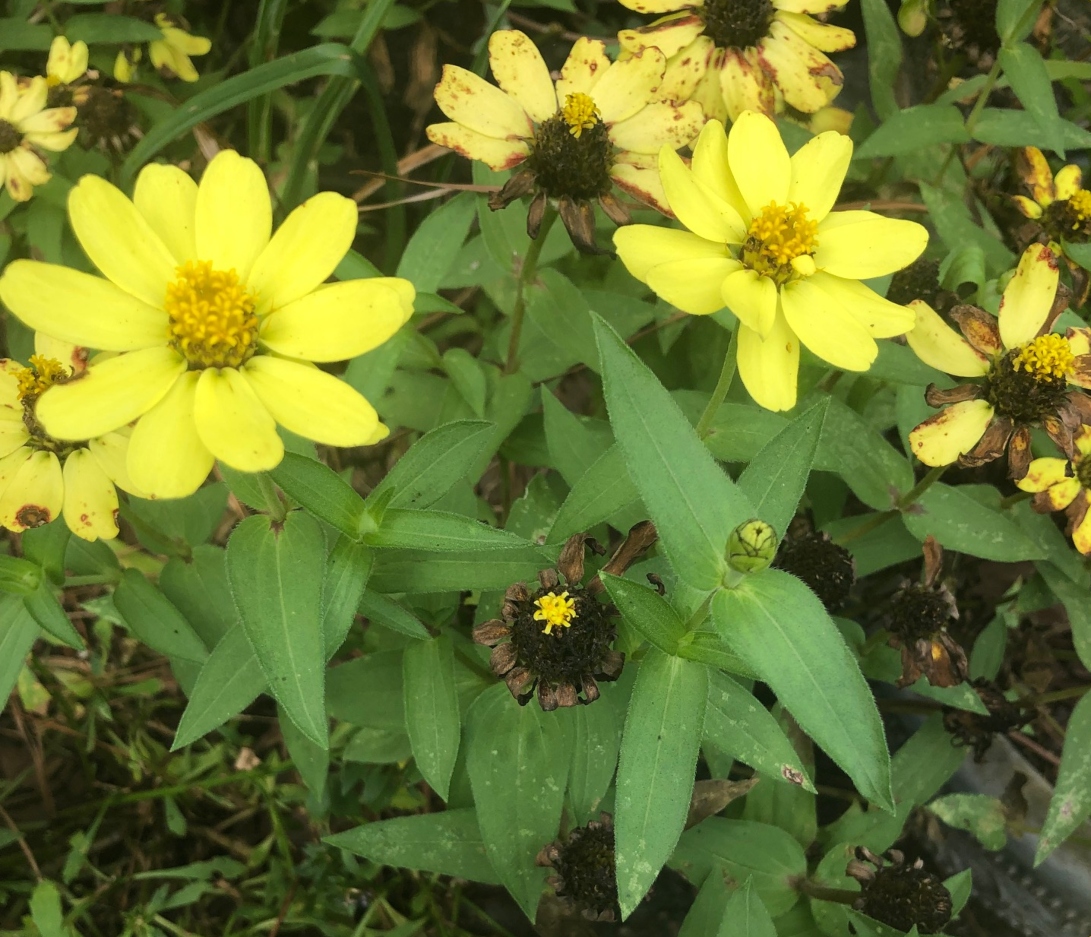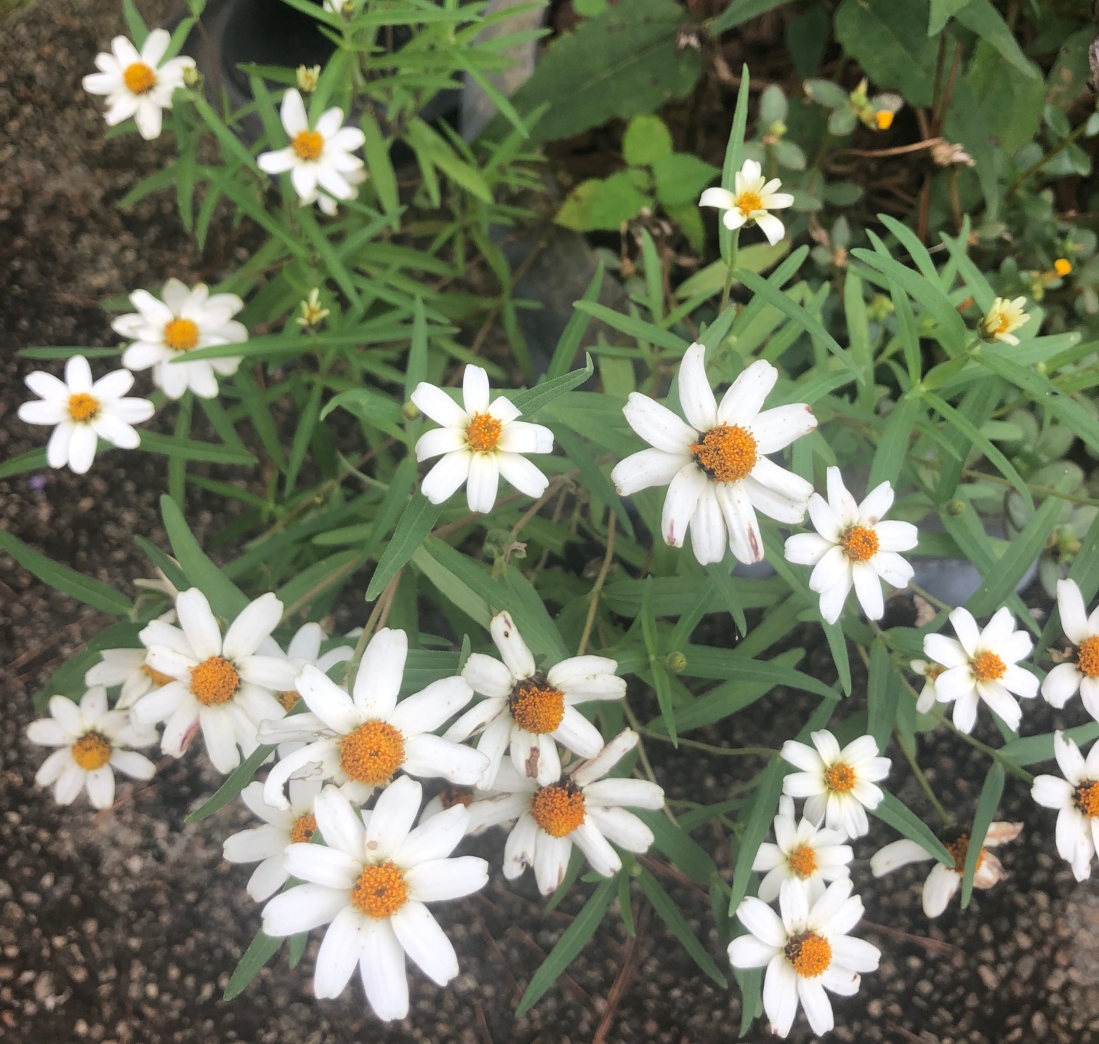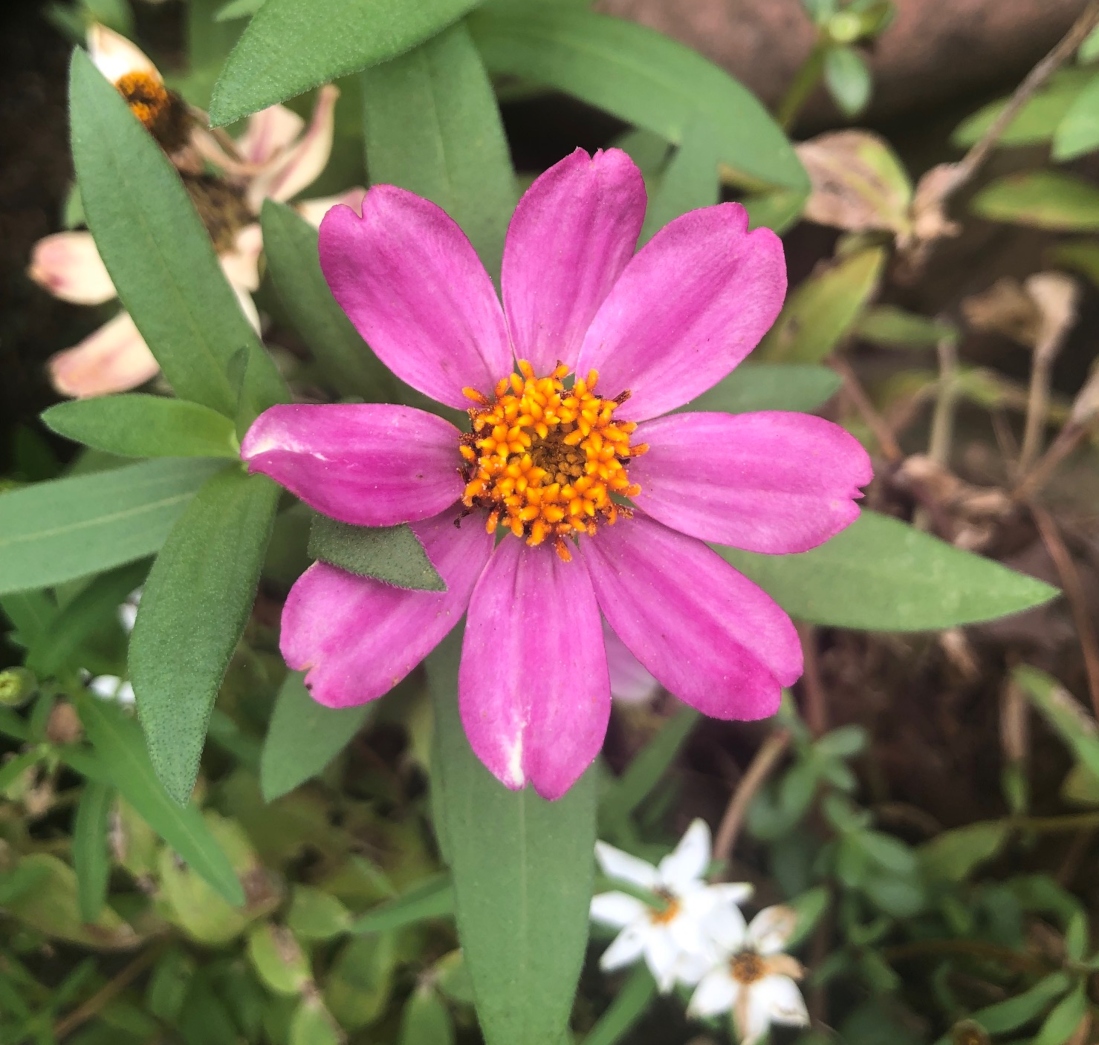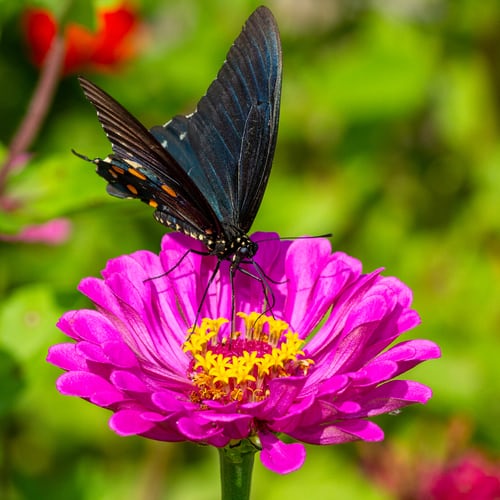
As a young girl, I spent a week or two each summer at my Grandmother’s house. I remember her flower garden, every detail, like it was yesterday. It was a huge circle garden. In the center were the tallest flowers including hollyhocks, next were the colorful zinnias, then celosia and marigolds. I loved the smell and I loved the color. Perhaps those memories were filed away and later became my enthusiasm for growing flowers, including those stately zinnias.
I planted more zinnias in my garden this year than ever before. So happy I did. They are a real workhorse in the dog days of summer.
For Georgia summers, gardening requires plants with three key qualities, after all, it’s hot out there. The best flowers for hot summers are low maintenance, heat and drought tolerant, and provide brilliant color. Zinnias fit the bill on all three counts. And more. In fact, they’re one of the best flowers that you can put to work in your garden.
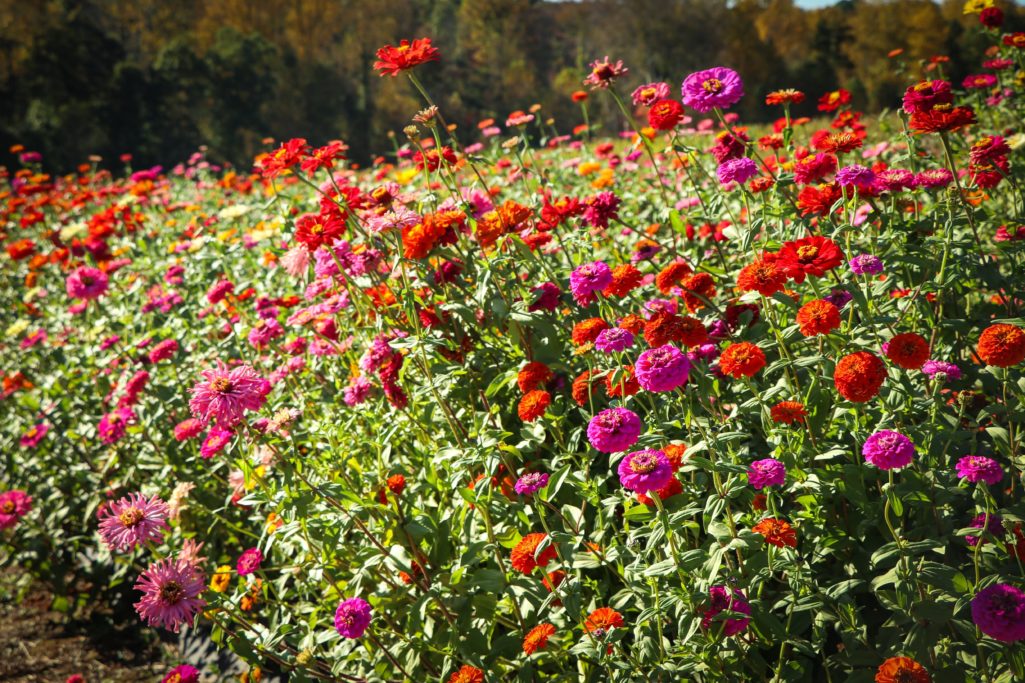 Is there an easier flower to grow? Maybe not. Zinnias are annuals, meaning that they go from seed to flower to seed quickly. Zinnias’ pointy seeds, shaped like little arrowheads, require only basic garden prep to sprout: sow them in well-drained soil, where there’s full sun and lots of summer heat, and you’ll have tiny seedlings in days, with flowers powering up in just a few weeks. No perennial can claim that speed!
Is there an easier flower to grow? Maybe not. Zinnias are annuals, meaning that they go from seed to flower to seed quickly. Zinnias’ pointy seeds, shaped like little arrowheads, require only basic garden prep to sprout: sow them in well-drained soil, where there’s full sun and lots of summer heat, and you’ll have tiny seedlings in days, with flowers powering up in just a few weeks. No perennial can claim that speed!
Zinnias work wherever you need color. They are available in almost every color imaginable, except for blue. The classic ones are tall and can reach up to 8 feet. There are other varieties that are more compact but bloom profusely. Think Profusion zinnias.
Easy care
Zinnias are low maintenance. Since they’re fast-growing, they shade out weeds. They don’t require much in the way of fertilizing (just an occasional well-balanced mix), and they don’t need mulching.
Deadheading helps to produce more flowers.
Wet summers can take their toll. And that can lead to powdery mildew and leaf spot.
- Water only when needed, and then only at the base of the plants. Wet leaves can promote mildew development, and splashing water can transfer fungus from the ground onto zinnia leaves in an instant.
- Camouflage tall, more mildew-prone varieties with other plants in the foreground.
Zinnia bonuses
It’s easy to save zinnia seeds. Simply let the flowers dry fully on the stem, then collect the seed heads and lightly crush them in your hand to release next year’s seed crop. Store in a cool, dry place as you do other seeds.
One last reason to plant zinnias year after year: they’re butterfly magnets. The bigger-flowered varieties act like landing pads for nectar-seeking butterflies and hummingbirds.

